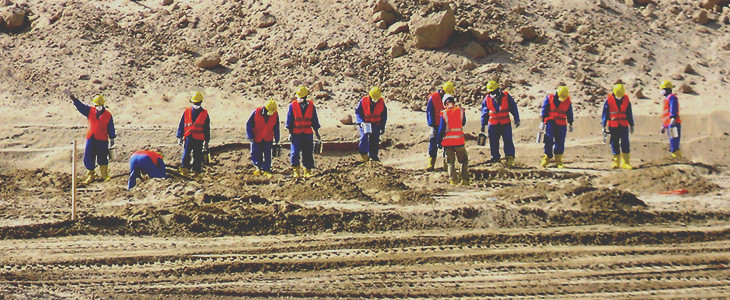We successfully managed the complex logistical challenges involved in procuring material handling equipment (MHE) and the local labor in Kuwait. Additionally, PIKA spearheaded obtaining the necessary permitting and clearances from U.S. Federal, State and local agencies to enable the DU shipment clear U.S. Customs.
The objective of this project was to provide all Military Munitions Response Program (MMRP) services under the WERS contract necessary to conduct Range Maintenance on Udairi Range 8A at the Udairi Range Complex. The ultimate goal was to return the range back to the training capabilities of the pre-2003 Range 8A. AECOM, under their U.S. Army Engineering and Support Command, Huntsville (USAESCH) WERS contract, needed a subcontractor who a) could perform the required services, b) had experience in Kuwait, and c) had already performed similar tasks successfully in Kuwait.
AECOM subcontracted this work to PIKA and we performed the tasks required to achieve the USAESCH’s project objective and goal for the Udairi Range 8A Maintenance. The specific tasks we executed included removing expended depleted uranium (DU) U.S. Army weapon round fragments (munition debris or MD), DODICs A986, A703, and C380; re-contouring the site to pre-2003 conditions; and removing and disposing of residual waste, referred to as Dry Active Waste (DAW). We provided radiological support in the form of a team of 18 U.S.-based professionals and approximately 150 local laborers for conducting the “spot and remove” operations and radiological surveys during which DU fragments were removed from the range soils. The successful completion of these tasks achieved the first objective.
As a secondary objective for this project, we collected and packaged the expended DU weapon round fragments, and then coordinated the transport of these packed materials off of Kuwaiti soil to U.S. Ecology located in Hanford, WA, USA.
We implemented a USAESCH DU recovery method known as “Spot-Contour” to remove DU from the site. Spot-Contour operations were based on visual identification of the DU, which has characteristic traits that are unique and easily identifiable from native material. Our teams also employed direct reading radiation survey field instruments to assist in recovery efforts and to verify DU removal, though these instruments were not utilized as a primary tool in identification and recovery of DU material.
One of the DU recovery task’s requirements was to ensure that recovered material did not contain any native material, e.g. sand or other detritus. To separate the native material from the recovered DU, we used Material Handling Equipment (MHE) to relocate sand and gravel (material) from the site terrain features to lay-down areas where a Spot-Remove operation to recover the DU was performed. This separation was performed by a combination of laborers and health physics technicians (HPTs) on the material layer or “lift.” After the Spot-Remove exercise was complete on the lift, then more material was brought to the area and the process was repeated until the Spot-Contour of the feature was complete.
As a final step to this objective, we packaged the expended DU U.S. Army weapon round fragments in a B-25 container that we shipped in several steps with the final destination of Richland, Washington, USA.
For more information, please contact us.

